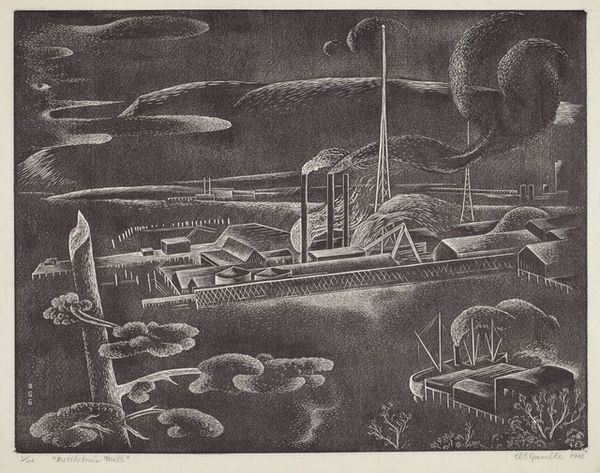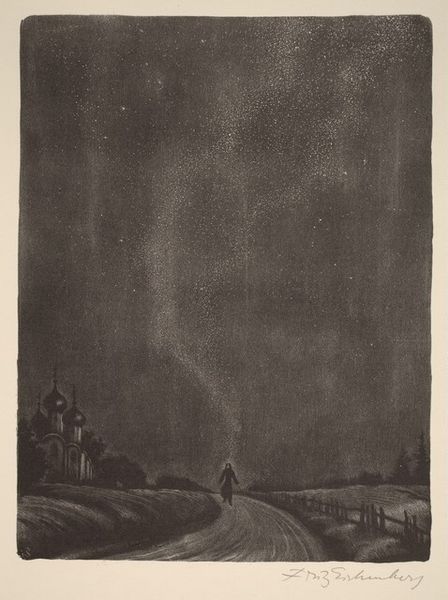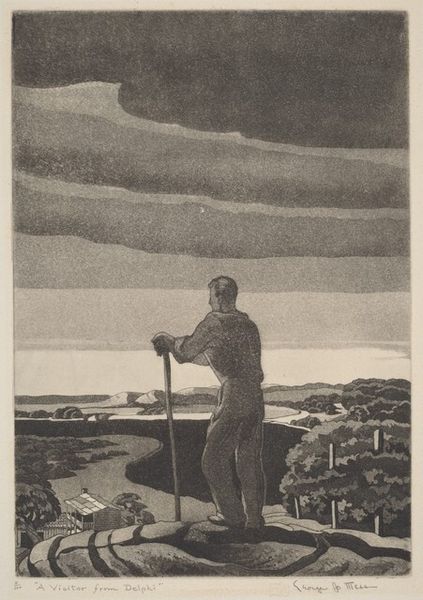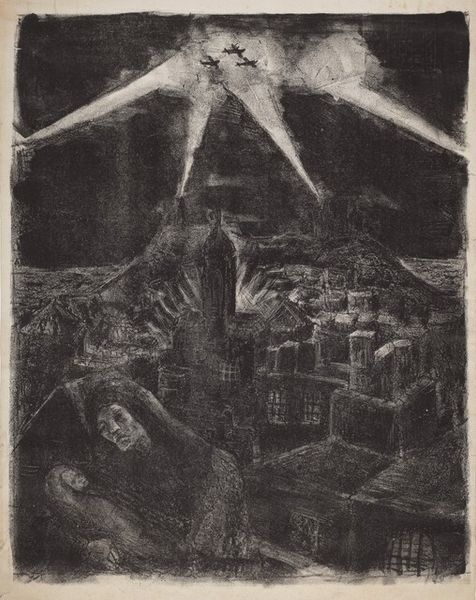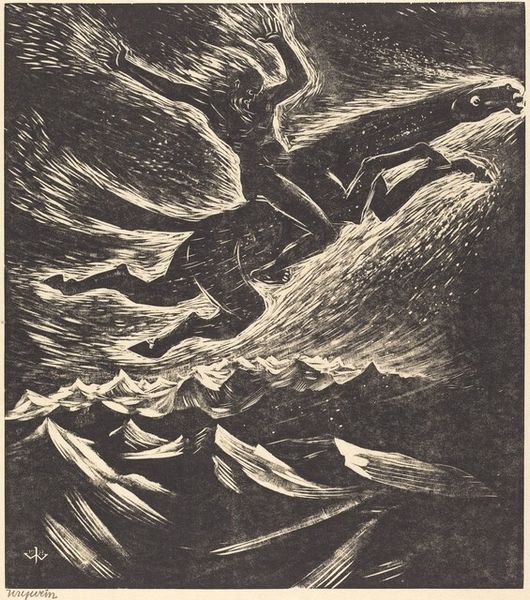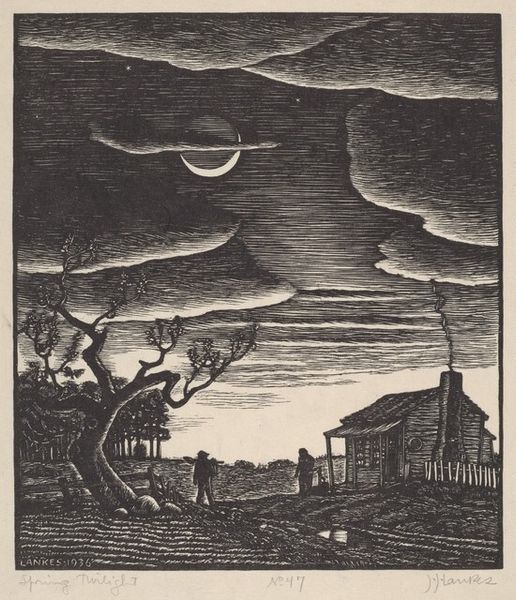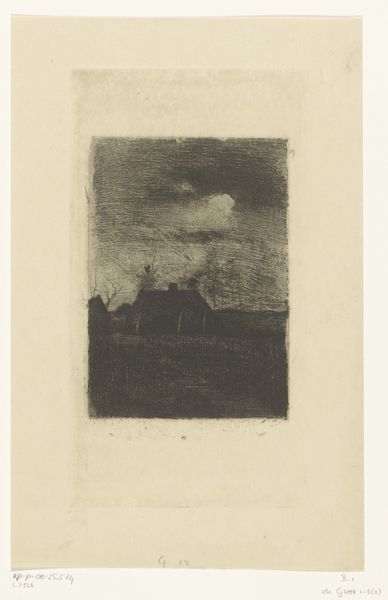
print, etching
#
narrative-art
# print
#
etching
#
landscape
Copyright: Public domain US
Curator: Wow, this print is heavy with mood. There’s an almost palpable tension radiating from the piece, a dark anticipation of something. Editor: Indeed. What we're looking at here is "The Sentinels," an etching crafted in 1919 by the Canadian artist Arthur Lismer. A haunting image from the tail end of the First World War. It now resides here at the National Gallery of Canada in Ottawa. Curator: I see a lone artillery gun dominating the foreground, stark and unforgiving against that sky. Then what appears to be a searchlight slicing through the darkness, adding a dynamic sense of movement… or threat. The title takes on new resonance; not guardians as protectors, but mechanical wardens watching, always watchful. Editor: Exactly! Light and dark—the eternal duality. Lismer employs these with masterful skill to evoke a sense of disquiet and the constant vigilance required during that tumultuous time. This is not only a depiction of military technology but also a potent symbol of power and potential destruction. The beam itself could be interpreted as the unwavering gaze of authority. Curator: There is almost something sacred about that stark contrast. The composition itself, that unwavering beam splitting dark matter. What does the choice of printmaking techniques add to the emotional content of the work? I almost feel the scratches from the needle. Editor: Ah, that's astute! The use of etching is crucial, and intentional. That scratching of the surface adds layers of darkness, anxiety and unrest—making the observer complicit in the scene, almost present. Think about what prints traditionally represent. A widely and easily circulated idea... or message. Curator: Hmmm. An uncomfortable message sent, over and over...I get the artist’s intention in a flash. He is really inviting us to enter into the memory of that period, that weight. Thank you. Editor: And thank you. Lismer here masterfully marries symbolism, historical context, and emotional depth. He turns a moment in time into a universal contemplation on humanity’s capacity for both creation and annihilation. It gives a whole new meaning to his art.
Comments
No comments
Be the first to comment and join the conversation on the ultimate creative platform.
